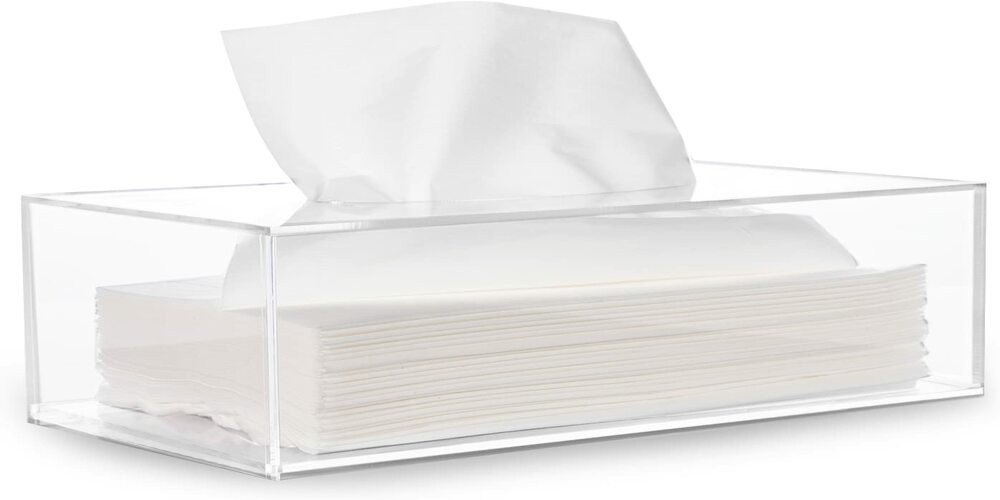You may jazz up your clear tissue box by putting covers on them. They’re handy for maintaining visual cohesion as you go from one container to the next. If you make your tissue box, you may customize it with your existing décor. Making your tissue box cover is the best way to guarantee that it will suit the specific dimensions of your tissue box.
Creating A Simple Tissue Box Cover
Disassemble A Used Tissue Box And Use The Pieces As A Guide.
First, remove the bottom of the tissue box using a box cutter or craft knife. Then, using a sawing motion, cut corners straight down. Reduce the height of your container until you get a shape similar to a plus sign. If there is a plastic cover over the tissue slot, remove it. Try taping masking tape over the top, sides, and bottom to convert an oval tissue slot into a rectangular one.
Put Your Pieces Of Cloth Together Using Pins.
Pick from two fabrics, one for the outside of the tissue box cover and the inside lining. Join them with a pin. Everything will be taken out at once when you trace it. As a result, you may be sure that the playing field is level. Fabrics like printed cotton, linen, curtain, and upholstery fabric are all excellent options for the outside. The Interior fabric should be simple cotton or muslin.
First, You’ll Want To Transfer The Pattern Onto The Cloth By Tracing It.
Internal corners need extra seam allowances of 14 inches (0.64 centimeters). All four sides must be flush with the template at all times. The last step is to add a 1/4-inch (0.64-centimetre) seam allowance after tracing within the tissue slot hole.
Prepare Your Batting By Tracing Your Pattern.
Do the tracing, including the tissue slot hole, and then remove the template. If you want to cut down on the overall size, you need first draw a line 14 inches (0.64 centimeters) within each corner. It would be best if you still ensured that your template’s top, bottom, and side edges are flush with the top, bottom, and sliding edges.
Make Some Cuts In Your Clothes And Stuffing.
Fabric pieces should be pinned together before cutting and then unpinned afterwards. This ensures that the two halves will fit together perfectly. Fabric filling should be cut out separately. Create slits in the corners of the tissue slot hole on both pieces of cloth, measuring 14 inches (0.64 centimeters) in length. Create 45-degree slits. These notches will come in handy when it comes time to fold in the sides.
In Between The Two Layers Of Cloth, Place The Batting.
Right-side-down, start with the lining fabric. Batting should be placed on top, centered. Finish by layering the outer cloth on top, right-side up. Lock everything down with pins.
Tie Off At The Top Of Each Corner And Sew Across Each Flap.
If you lift the lid of your tissue box and look below, you’ll notice a rectangle with four smaller rectangles protruding from its corners. The side flaps consist of the four adjacent rectangles. Topstitch across the top of your tissue box cover at the seam where the side flaps meet the top panel. The batting will fold more neatly if you do this. The thread should be a color that blends in with the outer cloth, and the bobbin thread should be a color that complements the inside fabric.
The Tissue Slot Must Be Folded Inward By 14 Inches (0.64 Centimeters).
To use, you must first invert the tissue box so that the inside fabric faces you. The tissue slots may be secured with pins once the edges have been folded inward by a quarter inch (0.64 centimeters). The hems won’t be visible after you’re done, so don’t worry about it.
Conclusion
Wrap the present with tissue paper by folding one end over the top. After setting the present on the tissue paper, a corner should be tucked in and taped to secure the gift. Keep this corner in place so the present doesn’t get scratched. Bring the other edge over the previous one and tape it down.

